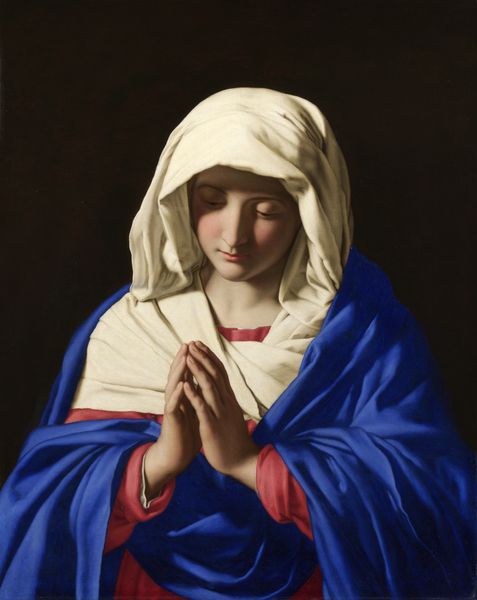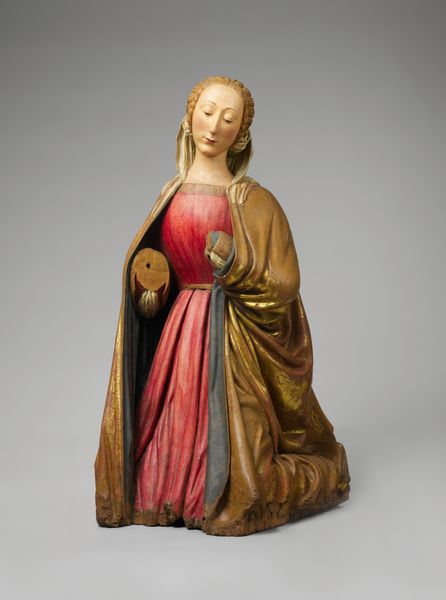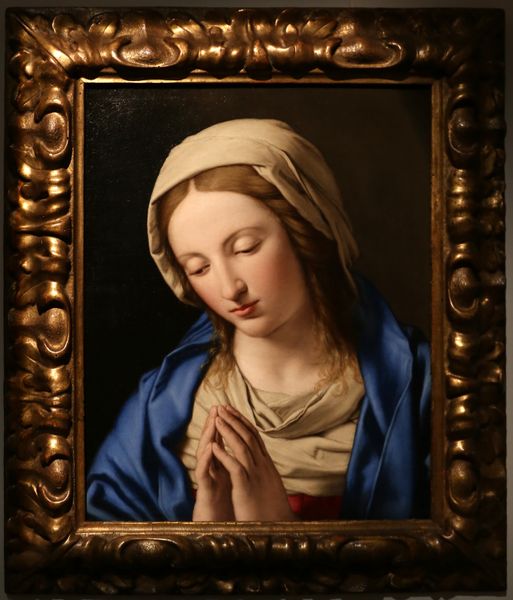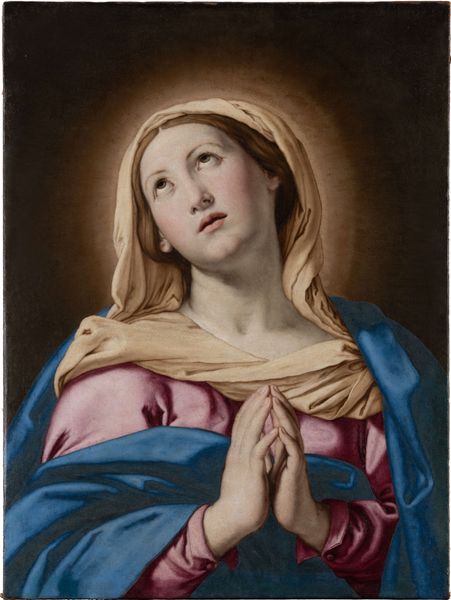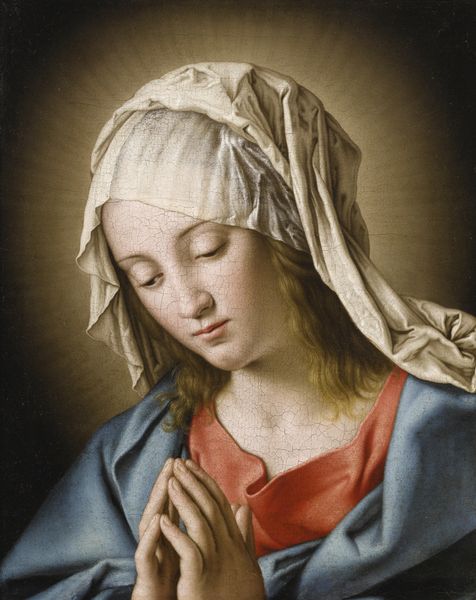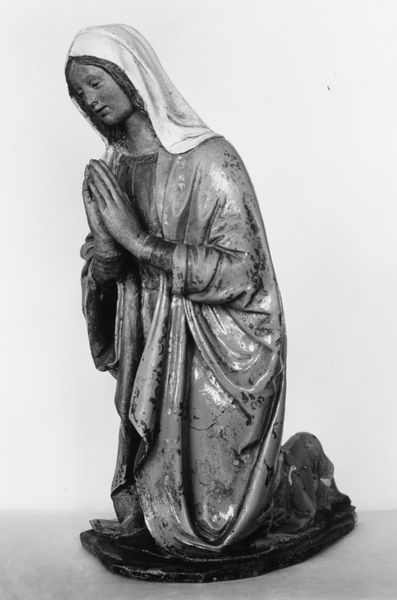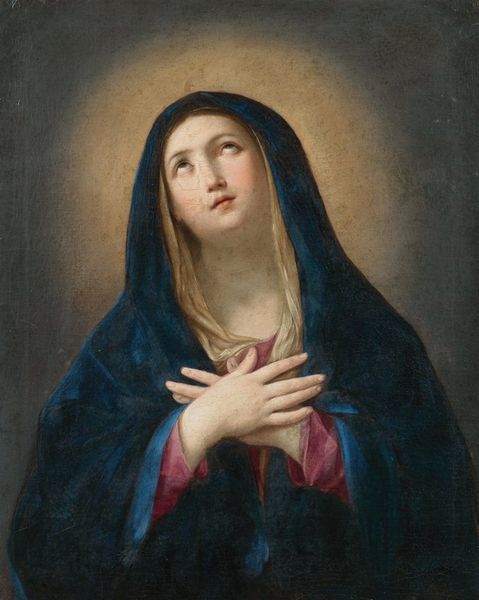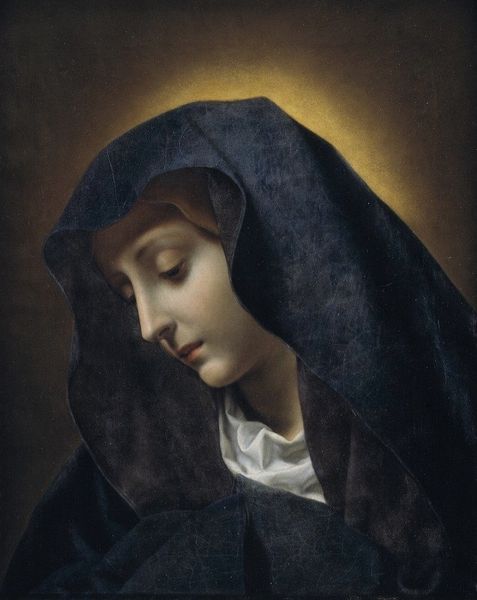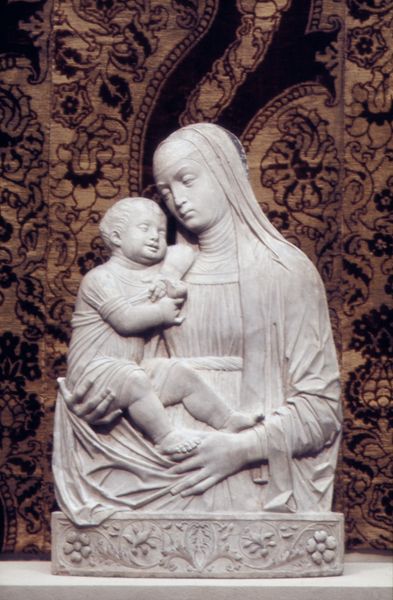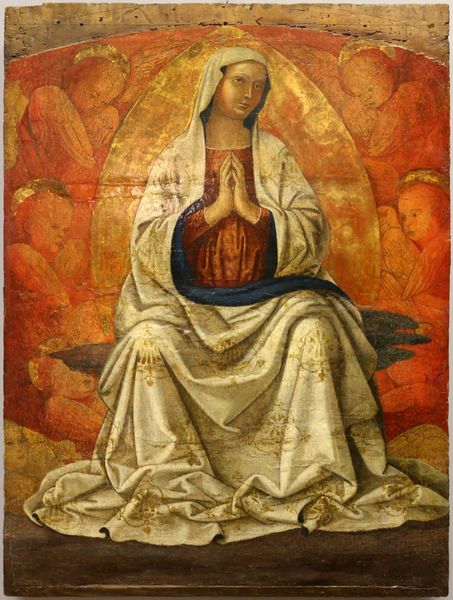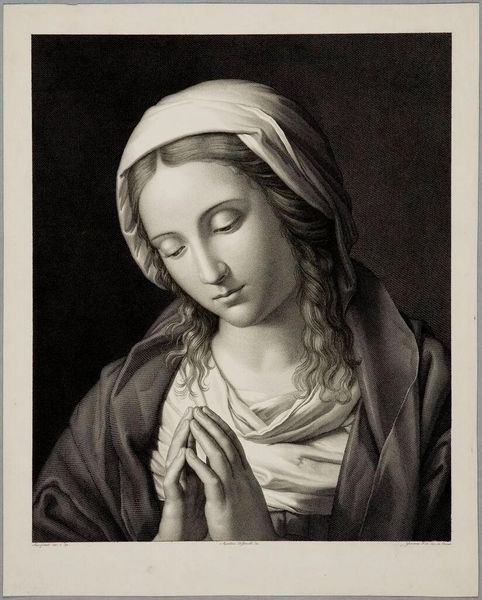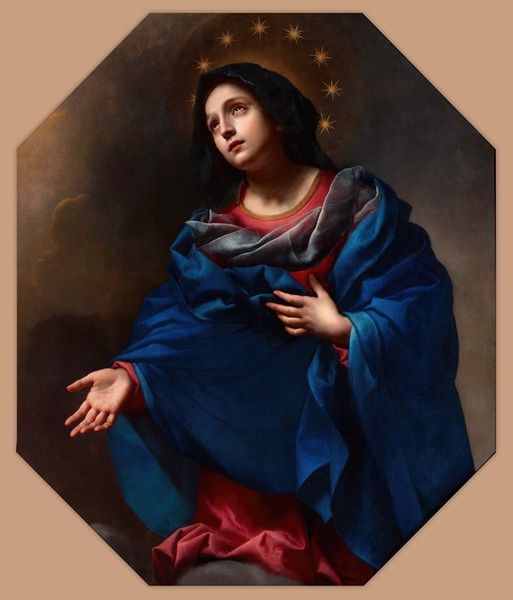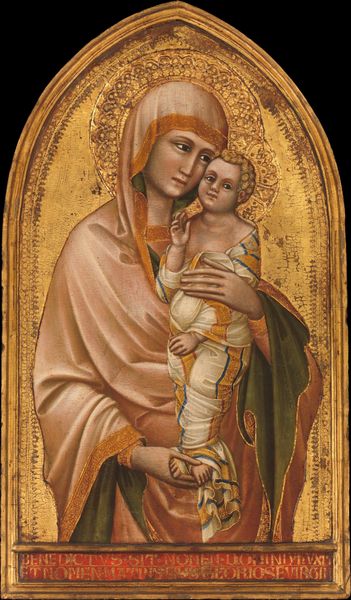
sculpture, wood
#
portrait
#
baroque
#
figuration
#
sculpture
#
wood
#
decorative-art
Dimensions: sculpture only, confirmed: 24 13/16 × 23 1/8 × 15 in. (63 × 58.7 × 38.1 cm); on black base, confirmed: 26 × 24 3/4 × 16 1/2 in., 44.2 lb. (66 × 62.9 × 41.9 cm, 20 kg)
Copyright: Public Domain
Pedro de Mena made this sculpture of the grieving Virgin Mary in 17th century Spain. We can see how the image creates meaning through its visual codes and historical associations. Spain at this time was deeply religious, and the Catholic Church was a major cultural force. The Church used images of saints and biblical figures to inspire devotion and convey religious teachings. Mena was one of the most important sculptors of the Baroque era, where drama and emotion were emphasized. The sculpture's title, Mater Dolorosa, means "Mother of Sorrows," and it refers to Mary's suffering as she witnessed the crucifixion of her son, Jesus Christ. The image's emotional appeal speaks to the Church's efforts to reach a wide audience. Looking at inventories, guild records, and religious writings from the time, we can better understand the social and institutional contexts that shaped the creation and reception of this artwork. We see how art is contingent on its social moment.
Comments
No comments
Be the first to comment and join the conversation on the ultimate creative platform.
